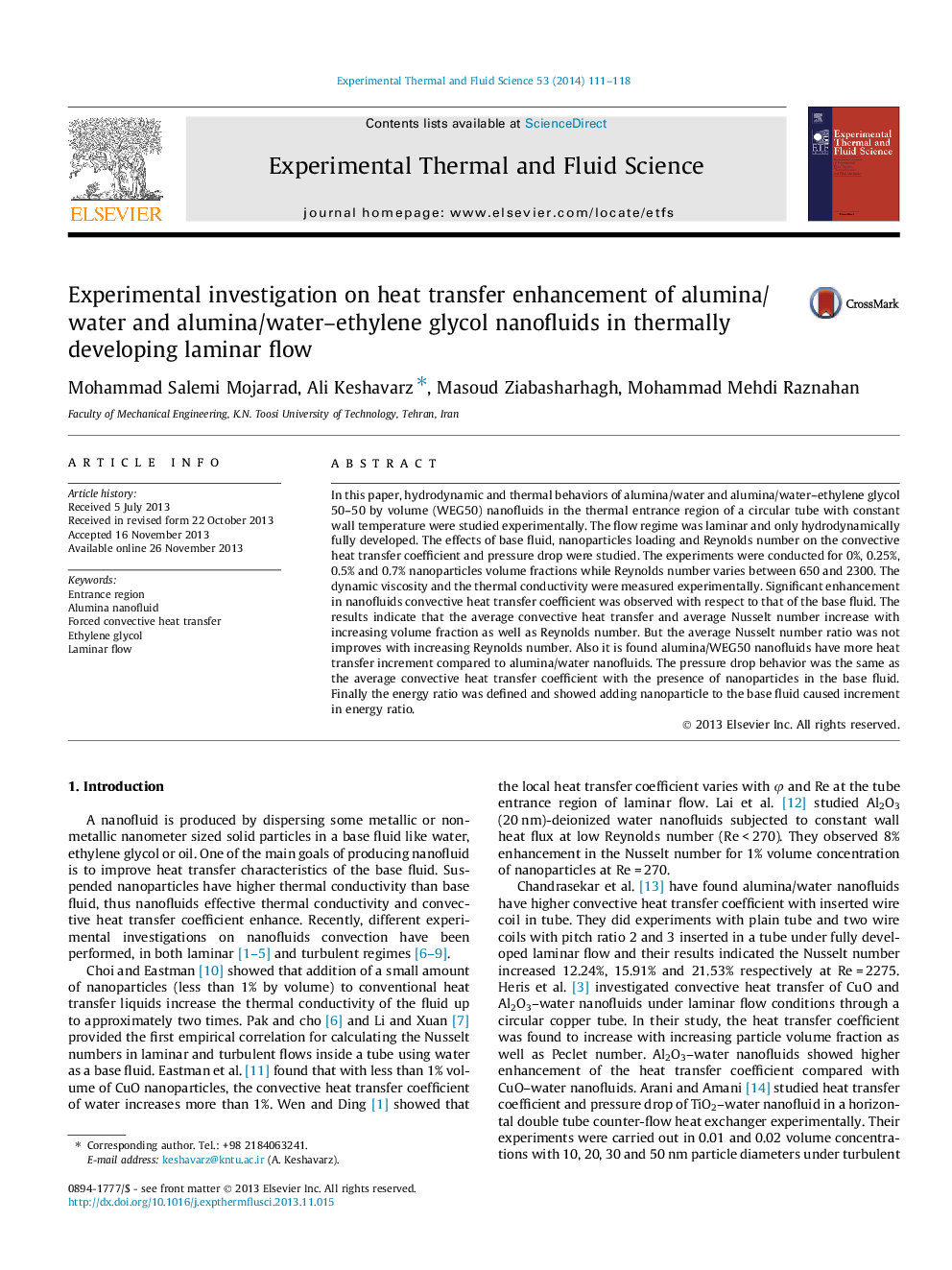| Article ID | Journal | Published Year | Pages | File Type |
|---|---|---|---|---|
| 651333 | Experimental Thermal and Fluid Science | 2014 | 8 Pages |
•Heat transfer enhancement of alumina–water–ethylene glycol nanofluids was studied.•Nanofluids have higher heat transfer coefficients in comparison with the base fluid.•Aumina–WEG50 nanofluids have more heat transfer increment compared to alumina–water.•Nanofluids energy ratio increased with increasing nanoparticle concentration.
In this paper, hydrodynamic and thermal behaviors of alumina/water and alumina/water–ethylene glycol 50–50 by volume (WEG50) nanofluids in the thermal entrance region of a circular tube with constant wall temperature were studied experimentally. The flow regime was laminar and only hydrodynamically fully developed. The effects of base fluid, nanoparticles loading and Reynolds number on the convective heat transfer coefficient and pressure drop were studied. The experiments were conducted for 0%, 0.25%, 0.5% and 0.7% nanoparticles volume fractions while Reynolds number varies between 650 and 2300. The dynamic viscosity and the thermal conductivity were measured experimentally. Significant enhancement in nanofluids convective heat transfer coefficient was observed with respect to that of the base fluid. The results indicate that the average convective heat transfer and average Nusselt number increase with increasing volume fraction as well as Reynolds number. But the average Nusselt number ratio was not improves with increasing Reynolds number. Also it is found alumina/WEG50 nanofluids have more heat transfer increment compared to alumina/water nanofluids. The pressure drop behavior was the same as the average convective heat transfer coefficient with the presence of nanoparticles in the base fluid. Finally the energy ratio was defined and showed adding nanoparticle to the base fluid caused increment in energy ratio.
